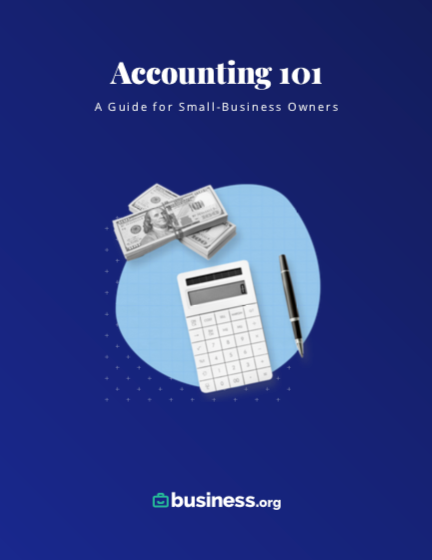We are committed to sharing unbiased reviews. Some of the links on our site are from our partners who compensate us. Read our editorial guidelines and advertising disclosure.
Cost-Benefit Analysis 101: A Practical Guide for Small Business Owners
As a small business owner, every decision you make has a ripple effect on your bottom line.
That's where a cost-benefit analysis comes in. It’s a powerful tool that helps you weigh the pros and cons of a particular decision so you can make more informed choices for your company.
We'll explain what a cost-benefit analysis is, when to use it, and how to create a cost-benefit analysis.
By signing up I agree to the Terms of Use and Privacy Policy.
What is a cost-benefit analysis?
A cost-benefit analysis is a systematic approach to determining the potential costs and benefits of a decision or project.
It helps you assess whether the advantages of the decision outweigh the costs in the long run.
It involves identifying, quantifying, and comparing different factors to determine the most favorable option.
By conducting a cost-benefit analysis, you can gain a better understanding of the financial outcomes of your choices, helping you make well-informed business decisions.
When should you run a cost-benefit analysis?
Creating a cost-benefit analysis can be helpful in numerous situations.
A cost-benefit analysis can help you evaluate the financial impact of major investments like buying new equipment, expanding your office space, or upgrading technology.
If you’re considering introducing a new product or service, a cost-benefit analysis can also help you assess if the potential revenue generated will justify the cost. It can help you set competitive prices and better allocate resources.
Here are some other instances when conducting a cost-benefit analysis can be beneficial:
- Prior to launching a marketing campaign
- When evaluating employee compensation and benefits packages
- Weighing investment opportunities
- When considering implementing environmentally friendly practices or initiatives
- Before implementing major organizational changes, such as restructuring, mergers or acquisitions
- Before adopting a new software system
How to create a cost-benefit analysis step-by-step
There’s no tried and true way to conduct a cost-benefit analysis, but they all share a few common steps.
1. Identify a framework
The first step in creating a cost-benefit analysis is to clearly define the decision you need to make. Whether it's investing in new equipment, expanding your marketing efforts or hiring additional staff, clarifying your purpose will set the stage for your analysis.
Just like with any project, you’ll need to set boundaries. Decide on the timeframe you'll consider for estimating costs and benefits. Maybe you'll limit it to a year from now or project 10 years in the future.
Also, think about the types of costs and benefits you want to include or exclude. For example, you might consider labor costs and resources but exclude opportunity costs.
And don't forget how you'll measure those costs and benefits. Assign dollar values to the tangible stuff like labor and resources, and use key performance indicators for the intangibles, like brand awareness.
2. Identify both costs and benefits
Next, you want to dive into the specific types of costs and projected benefits of your project.
This may sound simple, but there’s a lot to consider.
Here's how you can approach this step.
Types of costs
- Direct costs: These are the costs directly associated with the project you’re considering. This can include purchasing new equipment or buying raw material to launch a new product.
- Indirect costs: These are usually on-going business expenses, such as utilities, rent, and administrative overhead costs.
- Intangible costs: These are potential drawbacks of the project that might be hard to quantify. This can include things like customer dissatisfaction, employee morale, and your brand’s reputation.
- Opportunity costs: This refers to the revenue or benefits you might miss out on by pursuing one decision over another.
Types of benefits
- Direct: These are benefits you can assign a dollar amount to, such as increased revenue and cost savings.
- Indirect: These benefits are harder to quantify, such as increased productivity and time saved.
- Intangible: This can include things like improved customer satisfaction and employee retention.
3. Assign monetary value
Now that you’ve mapped out the foundation of your analysis, it’s time to add dollar amounts to each cost and benefit.
These numbers help create a more accurate analysis.
Assigning a dollar value to direct costs and benefits is usually pretty easy and straightforward. Quantifying intangible costs and benefits, on the other hand, can be more challenging.
Using historical data from similar projects you’ve completed in the past can give you a roadmap of potential costs for your current analysis.
Using project management software, such as Asana or Zoho Projects, can make this step easy.
You might also consider consulting with professionals who have expertise in the area you're evaluating. They can help assign monetary values based on their industry knowledge.
Finally, a little market research goes a long way. Gathering data on market trends and consumer behavior gives you some real-world perspective when assigning dollar amounts.
In cases where it’s difficult to assign a specific dollar amount to intangible costs and indirect benefits, consider using key performance indicators instead.
Project management software comparison
4. Crunch the numbers and compare
Once you’ve assigned monetary values to the costs and benefits, it's time to crunch the numbers and compare the results.
First, add up all the costs you identified earlier. Then, sum up all the benefits. You can use a spreadsheet or comparison table to give you a comprehensive view of both categories.
Let’s assume the total costs come out to $10,000, while the total benefits add up to $15,000.
Next, calculate the net benefits by subtracting the total costs from the total benefits. In our example, the net benefits would be $5,000: $15,000 (benefits) - $10,000 (costs).
A positive net benefit indicates that the benefits outweigh the costs, which means you’re looking at a potentially smart business decision.
On the flip side, a negative net benefit suggests that the project or service will cost more than its potential payoff.
You can also calculate the benefit-cost ratio (BCR). To find the BCR, divide the total benefits by the total costs. In our example, the BCR would be 1.5 ($15,000 / $10,000).
A BCR greater than 1 indicates that benefits outweigh the costs.
Some cost-benefit analyses may require a more thorough examination. This could involve:
- Discount rates: Discount rates are employed to estimate how the values of costs and benefits will change over a long period of time. It takes factors like inflation into account. Essentially, discount rates function like an interest rate applied to costs and benefits expected to occur in the future, enabling their conversion into present value. This approach provides a more accurate estimate of their current worth.
- Sensitivity analysis: Sensitivity analysis explores the impact of uncertainty on decisions, costs and profits. It allows for a comparison of worst-case and best-case scenarios to assess the potential outcomes of a decision.
5. Make an informed decision
Armed with the results of your cost-benefit analysis, it's time to make an informed decision and share your results with others.
Evaluate the net benefits, benefit cost ratio and the impact of potential risks on your decision. Consider the importance of non-financial factors as well, such as long-term company goals and your business's values.
Even if your cost-benefit analysis yields a positive result, it’s important to evaluate your company’s resources. For example, even if upgrading the company website is a net positive, your company might not have enough funds to pursue the project right away.
If your net cost-benefit turns out to be negative, it means the costs are outweighing the benefits.
Analyze the situation and identify the most costly items, then brainstorm ways to cut those extra expenses. There may be alternative approaches you can take to help you achieve a better balance.
Advantages of using cost-benefit analysis
One of the biggest advantages of using a cost-benefit analysis is objective decision making.
By assigning monetary values to costs and benefits, you can analyze the numbers while reducing the influence of personal bias.
This objectivity helps you make decisions based on facts and data rather than on gut feelings and guesswork.
Conducting a cost-benefit analysis also provides you with valuable insights, which helps you create more accurate financial forecasts and develop realistic budgets. It makes it easier to identify potential cost savings or revenue-generating opportunities.
Finally, a cost-benefit analysis provides a strong framework for presenting information to stakeholders, investors, partners, and employees.
By quantifying the costs and benefits in an easy-to-understand format, you can clearly communicate the rationale behind your decisions to other people.
Downsides of using cost-benefit analysis
A cost-benefit analysis can be a great tool in your financial planning toolbox. However, it’s far from perfect, so understanding its limitations is key.
First off, a cost-benefit analysis is subjective. When you start putting dollar values on intangible costs and benefits, things can get a bit blurry. Different people may have different opinions on what each factor is truly worth, making it tough to reach a unanimous decision.
For example, how do you put a price tag on employee satisfaction or customer loyalty? It's not as easy as tallying up receipts. This can leave you with an incomplete picture of the real costs and benefits at play.
Another limitation? Estimating future costs and benefits in today's dollars can be tricky. Failing to account for factors like inflation can skew your analysis and lead to inaccurate conclusions. And predicting future inflation — especially for long-term, multi-year projects — is difficult.
Similarly, unexpected events or market changes can throw a wrench in your plans. If your revenue suddenly plunges next year due to a recession, you may have less money to fund your new project than you projected in your cost-benefit analysis.
Rachel Christian is a Certified Educator in Personal Finance and a senior writer for The Penny Hoarder. She focuses on small businesses, retirement, investing and taxes.

With plans starting at $15 a month, FreshBooks is well-suited for freelancers, solopreneurs, and small-business owners alike.
- Track time and expenses
- Create custom invoices
- Accept online payments








